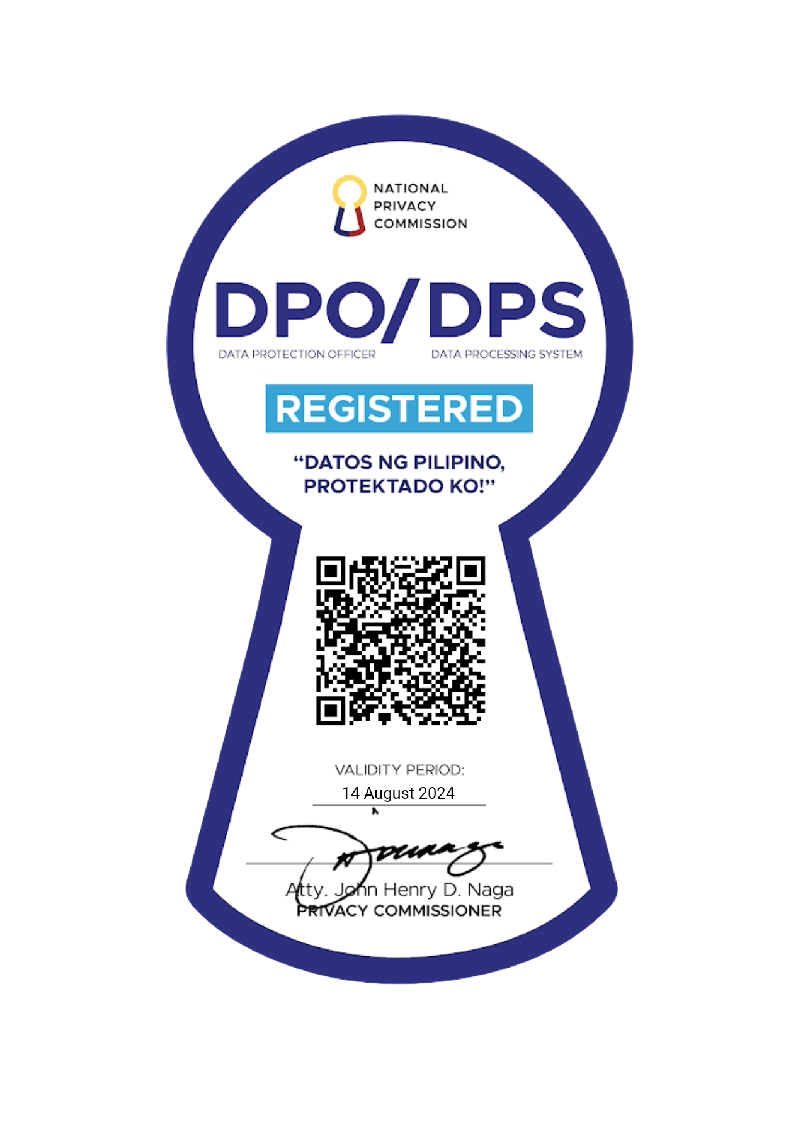-
About Us
Probe CX is a tech-powered, global customer experience organisation that amplifies human capabilities with technological excellence.
-
Vision and Culture
We help our clients become modern digital organisations by combining the latest technology with people, process and data.
-
Executive Team
Meet the team with unmatched experience committed to helping organisations create environments for digitally-enabled CX to thrive.
-
Compliance
Industry-recognised certifications to protect what matters most to our clients and their customers.
-
Locations
Over 19,000 team members delivering exceptional customer experiences across five countries.
-
Reasons to choose Probe CX
The top nine reasons to get more closely acquainted with Probe CX.
TECHNOLOGY & TRANSFORMATION SERVICES
 Creating exceptional customer experiences by 'doing it better'
Creating exceptional customer experiences by 'doing it better'
Optimise your customer experience by designing, deploying and managing digital solutions customised to your unique needs.
Continue reading- Blog
- How to build an RPA implementation strategy
How to build an RPA implementation strategy

What the company did next exceeded even its own expectations. Rather than stick to tried and tested formulas, its executives rolled the dice on rolling out a Robotic Process Automation (RPA) strategy and that decision has transformed the company’s traditional workplace practices. For proof, consider these results – an $80,000 saving in manual effort costs, an 80% reduction in bad debt/write-offs and the joy that comes from faster payment collection and cash flow improvements.
Success stories such as this are why so many companies are rushing to join the RPA revolution. You don’t have to be a corporate guru to appreciate a technology that is capable of achieving the holy trinity of saving money, improving efficiencies and enhancing customer experience. Best of all, automation is no longer only available to large organisations that boast mega budgets and a fleet of IT geniuses. Evolving technology has ensured RPA tools have never been more accessible, as witnessed by a 2020 global survey that revealed 30% of companies have fully automated at least one function of their business and two-thirds are piloting solutions to automate at least one process.
Now, having stoked your RPA fires, it is time to pour a little cold water on the situation. Automation may be a game-changer for modern businesses but, like any corporate strategy, it requires research, planning and precise thinking. Rather than rush to the automation altar and risk a failure that dampens ongoing enthusiasm for the technology, it is essential to take one’s time to build a quality RPA implementation strategy to not only increase the chances of success but guarantee it.

As for how to build such a strategy? We’re glad you asked.
RPA Implementation
Regardless of a company’s size or previous experiences in the area, the journey to a successful RPA implementation typically features four distinct phases.
Phase 1 – Assessment
It always seems obvious in hindsight but one of the most common reasons for failed RPA projects is the process was never actually suited to automation. Just because a process can be automated does not mean it should be and that is why we cannot stress enough the importance of the assessment phase. RPA needs to deliver tangible business outcomes, hence the best option for an initial automation project is often a task that involves highly repetitive steps in a larger process, with process mining or business process analysis great techniques for helping predict potential impacts.
To confirm whether RPA will be a winner for a specific process, start by studying and documenting the efficiencies and cost-saving opportunities that could be derived from doing so. This material can then act as a stimulus for sparking interest from key internal stakeholders as no RPA candidate will achieve success without the backing of the right people. Technology demonstrations by selected RPA vendors are also helpful in such situations.
From here, it is crucial to define the objectives of the RPA project and gain the backing of executive stakeholders on the likes of project roles, responsibilities and ensuing plans. Failing to secure such buy-in is a common mistake from tentative RPA proponents, along with trying to avoid risk by initially focusing on ‘safe’ processes that will deliver little business impact. All this results in is uninspiring business cases that fail to win favour from the key players in the decision-making process.

Phase 2 – Vendor Selection
Having done the hard yards of Assessment, it is now time for potential RPA providers to showcase their skills and expertise. Selecting the right vendor for your RPA initiative can make or break a project and you need to approach such meetings with a view to developing a long-term partnership. Before proceeding too far, also ensure that everyone is on the same page regarding technical requirements and evaluation criteria.
The Vendor Selection phase is a chance to refine your procurement strategy by inviting vendors to showcase their wares in onsite presentations. Having created a shortlist of providers that meet your list of technical requirements and mandatory criteria, you should be afforded the chance to witness demonstrations of how they intend to apply RPA to your selected processes. This live proof of concept is a golden opportunity for you to evaluate the various solutions respective vendors have for using RPA to replace specific processes.
Choice of vendor is one of the keys to RPA success and you should select yours based on factors such as onsite presentation, proof of concept, best fit across technical requirements and financial business case. You will also need to consider if you want to work with a vendor that conducts the configuration and test for you or those that sell ‘bot’ licences and educate you on how to implement them yourself. A common path is to embrace the all-in-one option for an initial project before developing in-house talents to manage configuration on future projects.

Phase 3 – Pilot and Implementation
It is now time to complete everything necessary to prepare and execute your RPA solution. From training human resources, testing the IT environment and documenting, tracking and completing the plan, no stone can be left unturned.
To showcase the full power of the RPA technology, you should explore the end-to-end automation of each selected use case and, if any errors are identified, refine the process and make final modifications prior to stakeholder review. The Pilot and Implementation Phase is crucial for laying a foundation for future RPA opportunities to be smoothly rolled into the long-term RPA strategy. By determining any additional requirements needed to support the pilot, conducting readiness assessment and finalising the individual RPA’s business case, you are giving yourself every chance of automation success not just now but into the future.
Phase 4 – Launch
Launch day is always an exciting time in the lifespan of any corporate strategy – but it is rarely the end of the hard work. So it is with an RPA implementation roadmap. This final phase includes the initial launch of your automation but also involves planning for the ongoing success of the software through proactive maintenance. Any RPA strategy needs to include key factors such as governance, operating model, organisational structure and process prioritisation systems. Flicking the ‘live’ switch on any RPA project should be celebrated but it is also essential to keep an eye on the future to ensure any rewards are not short-lived.

Tips for RPA Success
The four phases of an RPA implementation plan are a great guide for crafting a quality strategy but there are several other keys for success.
Internal Expertise
While RPA vendors will provide essential skills and advice, it is crucial to establish an internal resource that has a deep understanding of the processes best suited for automation and what is needed to make them a reality. Rather than risk an RPA implementation strategy due to a lack of adequate automation specialists, focus on developing subject matter experts (SMEs), data analysts and infrastructure support personnel.
RPA Advocates
The more support you can garner from key executives and business leaders, the more chance your RPA implementation strategy will have of flourishing. Sustained leadership support is not only desirable – it is essential. It is your job to create and share a clear and concise vision so such individuals not only get excited about RPA but inspire others in your organisation to embrace it.
Definitive Roles
A large-scale RPA strategy will require the support of multiple players and it is imperative they have clearly defined roles and responsibilities. From SMEs and process analysts to IT support and heads of business, make sure every key stakeholder knows exactly what they need to do and every opportunity to do it to the best of their ability.
Clear Communication
As RPA is a relatively new technology, you should assume most colleagues are coming to the table with a limited knowledge base. That means every step of the process needs to be communicated clearly, concisely and deliberately. Ensuring team members understand all aspects of an implementation plan – especially the most at-risk areas – will help limit errors and, in turn, bolster the chances of success.
Effective Governance
No RPA implementation strategy is complete without incorporating a quality RPA governance strategy. Just like human employees, bots are part of your workforce and you, therefore, need to factor in how changes to regulations, rules and policies may impact their performance. Just as we prepare protocols for team members to follow when unexpected changes occur, it is best practice to minimise the impact of unplanned downtime for automated processes.

Summary
Make no mistake – crafting a quality RPA implementation strategy is a huge task. Fortunately, it is also one that delivers huge rewards. Automation is here to stay and the sooner your organisation starts the process of developing and deploying RPA projects, the sooner it will join other businesses in realising the benefits outlined above.
One sector soaring on the back of Robotic Process Automation is contact centres, with customers’ needs being better addressed and employee satisfaction rising as they are able to tackle more meaningful work. Discover seven examples of where RPA is achieving success within the contact centre environment.
Related Articles
Technology
RPA in finance and accounting - a digital transformation
The finance and accounting sector is burdened by repetitive and time-consuming tasks, which is why robotic process automation is ideal...
Technology
8 RPA trends to watch
From hyperautomation to low-code platforms and increased focus on security, learn about the latest developments shaping the world of automation.
Technology
How to get started with intelligent automation
RPA can create growth opportunities and reduce operational costs but it is not a 'one size fits all' concept. Learn more in this blog here.
© Copyright 2024 Probe CX | All Rights Reserved
Privacy Policy | Financial Hardship Policy | Whistleblower Policy | Complaints Procedure | Supplier Code of Conduct | Make a Payment | Client Login





